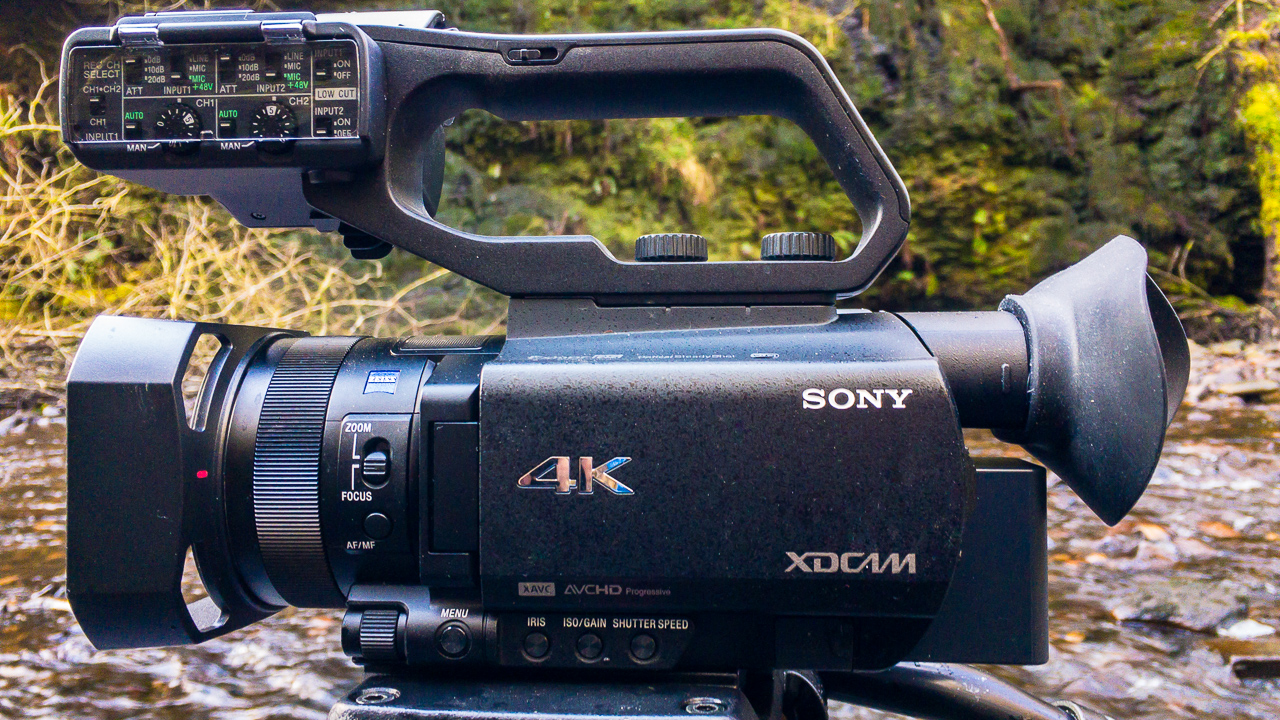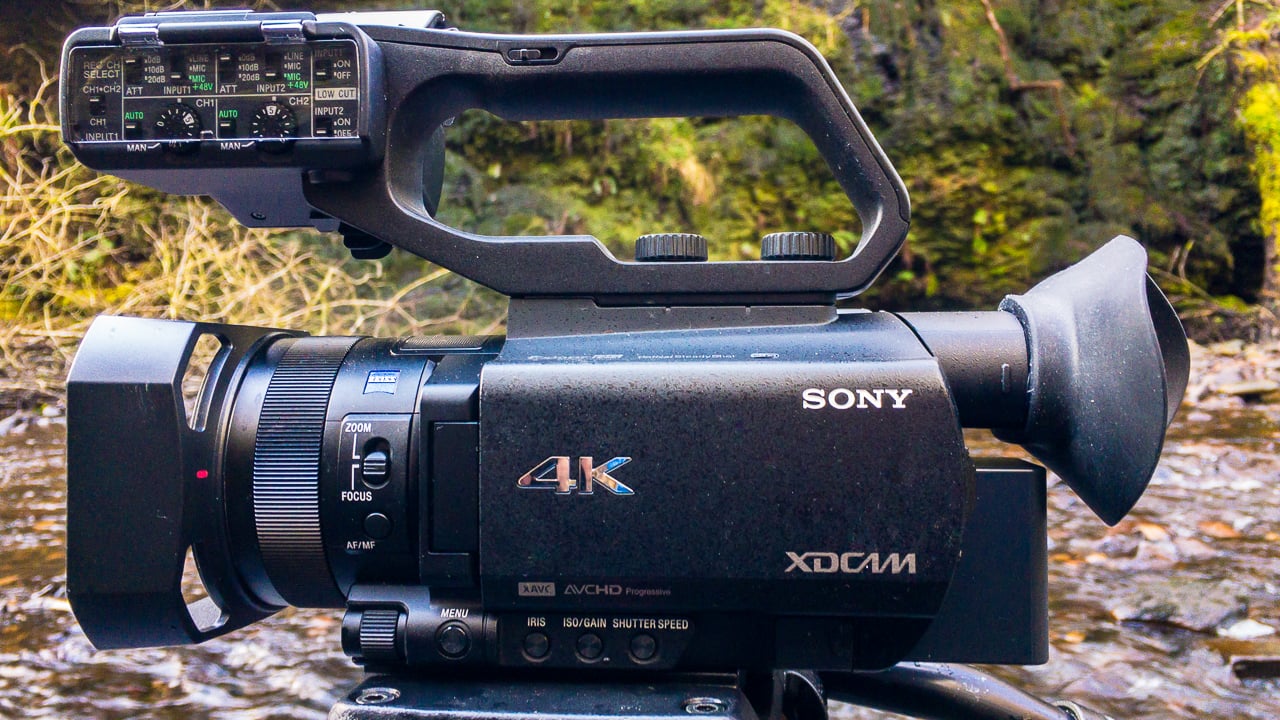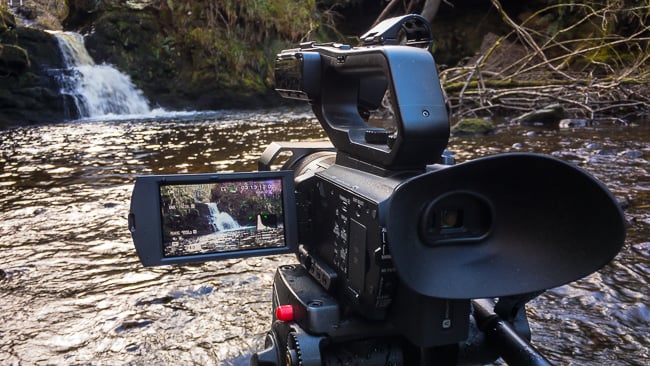
 The Sony PXW-Z90 XDCAM palmcorder is a cut above the rest
The Sony PXW-Z90 XDCAM palmcorder is a cut above the rest
In this concluding part of his Sony PXW-Z90 review, Simon Wyndham finds that it redefines what his expectations should be from such a camera.
In the first part of my review of the Sony PXW-Z90 I covered its general features and what it was like to use in the field. In this part I will cover some of the more fun aspects of it as well as the all important picture quality. Or at least my personal judgement of it.
Slow motion
Slow motion is all the rage these days. Gone are the days when the best way to get video slow motion was to double up alternate interlace fields to get a rather corse looking 50p! With 50/60p modes becoming standard for general shooting it was only a matter of time before 100/120fps slow motion options became normal. The PXW-Z90 is no exception to this, with the capability of up to 120fps in 1080p modes, and up to 1000fps in lower resolutions.
What kind of hit in resolution do you take at 1000fps. It's a fairly large one, but the amazing thing is that it is still absolutely usable with the resolution interpolation that is being done, so whatever Sony is doing to achieve this is impressive. At the full 1000fps you really do require a substantial amount of light, so this will determine how useful it is for you. However at more reasonable settings such as 250fps, a perfectly wonderful speed to have on tap, you get great slow motion and the lighting aspect is easier to deal with. For sure in these modes you take a resolution hit, but the quality is high enough that for the most part you need to be squinting pretty hard to notice the deficiencies.
The ultra high frame rate modes are taken in bursts of around 2 seconds. Much like previous Sony cameras that can do this, such as the FS700, the camera can be set up to be triggered at the start of a motion, at the end, or in the middle. I found that having it set up as an end trigger was the most intuitive of these. Once you press the record button the camera takes 30 seconds or so to write the footage to the card, while you can watch it play back. If you missed or messed up the shot you can cancel this at any time and have another go.
Slow motion is often overused these days, due in large part to the accessibility of good slow motion on current video cameras, but I’d be lying to you if I didn’t say that combined with the portability of the camera I had quite a lot of fun with this, not least because the S&Q (Slow and Quick) button is so accessibly easy on the side of the body. Guilty as charged!

Setting up slow motion on the PXW-Z90 was a breeze
Wifi control
Another big feature of the Z90 is its wifi connectivity, as well as its ability to be remotely controlled by a smartphone. This works pretty well, and connecting to the camera is a straightforward thing to do. Simply connect your phones wifi to the cameras own local network and run the Sony app. While the app is connected you can see a live view on your phone screen, but the LCD of the camera itself no longer shows the what the camera is seeing. This isn’t really an issue, since the whole point of operating via the app is that the camera is remotely located or unreachable.
The live view from the app kit surprisingly lacking in lag, responding pretty instantaneously to any camera movement. There is a very slight delay, which is to be expected, but it is very fast none-the-less.
Apart from starting and stopping recording and playing back clips the app is pretty simple, and the interface quite ‘retro’ looking. I couldn’t find a way to change aperture, zoom or other functions. But perhaps these will be introduced in future updates?
Picture quality
For most of my testing I used S-Log3, and some S-Log2 gamma settings. These were matched with the S-Log3.cine colourspace in the case of S-Log3, and the S-log2 5500k colourspace for S-Log2.
Usually with camera testing I will leave things at their default settings. However in this case, not only was the ability to use S-log3 too enticing, but I did want to see what sort of picture it could produce in terms of looking more ‘film like’. The PXW-Z90 may well be a camcorder with very news & broadcast type intentions. But I felt that it was much more than this. To this end I found the default detail settings to be far too much, and after some experimentation I settled on -5. This seemed to give a very natural look without being overly soft, but I’ll leave that to your judgement.
I found, frankly, that the PXW-Z90 in most instances produces an incredibly good picture. Far better than such a camera really should! I can safely say that after experiencing a 1” chip in a camera such as this, you’ll never want to go back to the smaller chip palmcorders elsewhere. The advantages are just too good. Dynamic range is excellent, although my none mathematical testing would not be able to give you a precise figure on that. What I can say is that I never felt disadvantaged by using it. Quite often when using smaller cameras, or less expensive ones, it is all too easy to be thinking “If only I had X, Y, or Z camera here instead”. I never felt that when I was using the Z90. As an additional note, the incredibly fast read out of the sensor means that there is absolutely minimal rolling shutter.
In my test footage below you will notice noise in the lowlights. But this should be taken in context of the user. I played very safe with the exposure, despite knowing that with S-Log3 it is usually best to err on over exposure without clipping to minimise this. This is just a case of using the camera for much longer and testing extensively how much you can get away with. Having said this I do not find the noise to be objectionable. In fact the camera copes very well indeed with high gain settings. Far better than I had expected.
Colour appears very natural. The Z90 certainly retains the ‘Sony look’. But as you would expect, it doesn’t give any nasty surprises. Reds seem very well rendered for instance, usually a good test of how a camera copes colour wise. Aliasing and moire were pretty much none existent. Sony pretty much dialled most such problem issues out of its cameras long ago. Clearly it will still be there under strict scientific testing. You can never 100% eliminate aliasing, but it certainly wasn’t of any issue here.
For my test footage I tried to leave the footage as close to out of the camera as I could. An S-Log3 to LC709 Type A LUT was applied, and in some cases some minor exposure adjustment made where I wasn’t demonstrating a function such as gain. Other than that, the footage was relatively untouched unless I specify in the video otherwise.
In playing around with grading, I did find that perhaps this isn’t a camera, in 8-bit 4K modes at least, that you can reach very far into the shadows with, so along with the highlights you will need to be balanced with your exposures to protect the areas you deem most important for the shot you need. We can’t expect everything from a Palmcorder after all! Clearly the 10-bit 1080p modes will give you the most mileage with regard to grading potential.
Conclusions
In conclusion I have to say that I absolutely loved using the PXW-Z90. I do not think I could say this about any other similar palmcorder I have used in the past. For me the Z90 changes what I can expect from such a camera. It can do duties as a general purpose system very well indeed, getting you 10-bit 4:2:2 1080p Rec.709 footage all day long. However, although it isn’t meant to be a cinema camera, switch it into the S-Log modes and dial down the detail, and you have a very functional discreet documentary camera, or with it’s fantastic slow motion modes an extreme/adventure sports camera that packs down into a small bag, but will reward you with fantastic imagery.
You can use it in 4K modes, which is wonderful in itself. But the fact that you can also use 1080p at 10-bit 4:2:2 with HLG or S-Log means that you should be good for high quality gradeable footage if 4K isn’t essential.
Battery life was also very good all things considered. With continuous use I would say that the Sony figures of 140mins with the supplied battery are a fair assessment.
The remaining question is whether you should be looking at Z90 or the FS5? The answer to this is fairly straightforward. If you need interchangeable lenses and the full S35 look, then clearly the FS5 is your only option. But if you don't, and want something more straightforward at half the cost then the Z90 will be your weapon of choice.
For outfits that often need a B-camera, or something more discreet to use than the much larger FS7 for instance, the PXW-Z90, I feel, is a very worthwhile addition to any production company’s toolkit. In fact I would wager to say that despite the fiddly nature of the palmcorder style controls, if you owned one you would likely find yourself using it much more than you might have imagined. Sony has created another classic. The PXW-Z90 is priced around £2700 inc vat.
If you missed the first part of this review, here it is.
Lastly, a bit of fun, a slow motion 1000fps pigeon.
Tags: Production


Comments